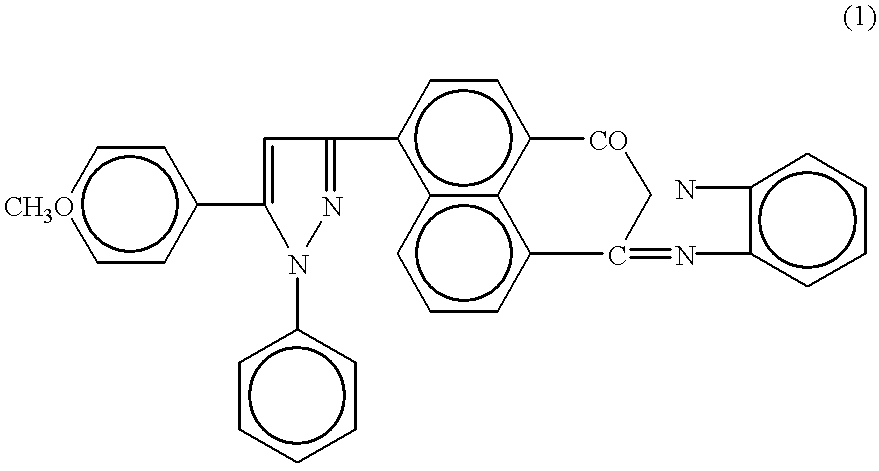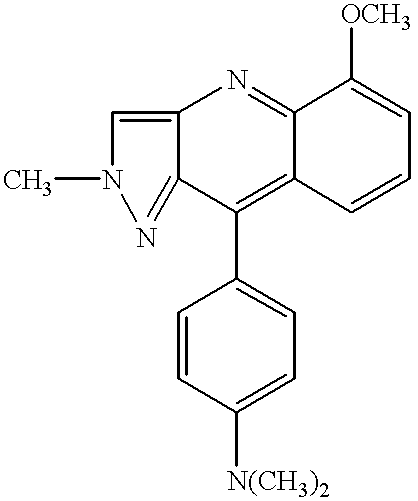Green organic luminophor
a luminophor and organic technology, applied in the field can solve the problems of difficult to obtain reagents, difficult to synthesis, and complex production process of green organic luminophor, and achieve the effect of improving spectral properties
- Summary
- Abstract
- Description
- Claims
- Application Information
AI Technical Summary
Benefits of technology
Problems solved by technology
Method used
Image
Examples
example 2
[0039] The compound was prepared as is described in Example 1 except for the mixture was boiled for 2 hours. The compound obtained has m.p. 236-237.degree. C. Yield: 15.7 g. (79%)
[0040] IR, absorption and luminescence spectra were identical to those described in Example 1.
example 3
[0041] The compound was prepared as is described in Example 1 except for 25 g. of potassium bichromate were used. The compound obtained has m.p. 236-237.degree. C. Yield: 15.5 g. (78%).
[0042] IR, absorption and luminescence spectra were identical to those described in Example 1.
[0043] 1-phenyl-5-(p-methoxyphenyl)-3-[1,8-naphthoylene-1',2'-benzimidazol--4-yl]-2-pyrazol was assayed as organic luminophor. Fluorescence spectra in toluene were measured and absolute fluorescence quantum yields in crystals were determined.
[0044] The fluorescence spectra were measured using a setup including a 3MR-3 mirror monochromator, a FEU-1 8 photomultiplier, an M-95 microampermeter. A SVDT-95 lamp was used as the excitation source, the 365 nm exciting line was singled out of its spectrum.
[0045] The absolute quantum yield was determined using the equal absorption technique (A. S. Cherkasov, Z. Fiz. Khim. 29, 2209, 1995).
[0046] The compound structure was confirmed by electron absorption spectra and IR o...
PUM
 Login to View More
Login to View More Abstract
Description
Claims
Application Information
 Login to View More
Login to View More - R&D
- Intellectual Property
- Life Sciences
- Materials
- Tech Scout
- Unparalleled Data Quality
- Higher Quality Content
- 60% Fewer Hallucinations
Browse by: Latest US Patents, China's latest patents, Technical Efficacy Thesaurus, Application Domain, Technology Topic, Popular Technical Reports.
© 2025 PatSnap. All rights reserved.Legal|Privacy policy|Modern Slavery Act Transparency Statement|Sitemap|About US| Contact US: help@patsnap.com



